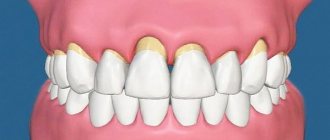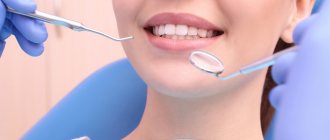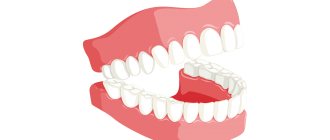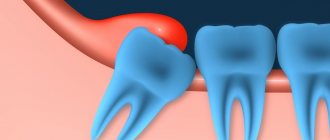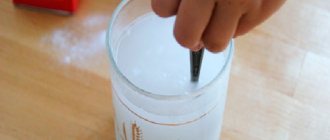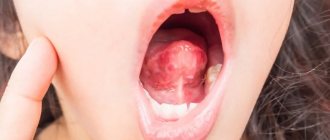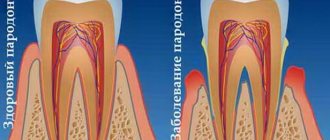Sudden sharp pain in the area of one or more teeth is common.
Often the cause of its occurrence is untreated caries, which has developed into inflammation of the pulp.
The disease is called pulpitis and requires immediate professional help. However, if it is not possible to get to a doctor at the right time, you can use traditional methods to relieve pain.
General principles
Treatment of pulpitis at home can be used at the initial stage of the disease, when pain occurs and it is not possible to get to the dentist. In this case, to relieve pain, you can use anti-inflammatory and analgesic drugs of general and local action , which are sold in pharmacies without prescriptions.
In addition, to prevent the development of the inflammatory process and its spread to healthy areas of the oral cavity, various methods of alternative medicine can be used. They include lotions, rinses and baths using decoctions based on natural remedies.
Tinctures of medicinal herbs, some fruits and vegetables, ground into a paste, will help relieve pain, reduce inflammation of the gum tissue, reduce swelling and itching before visiting a doctor.
Remember! It is impossible to cure pulpitis on your own without medical help. Alternative medicine can only smooth out the symptoms of its course and temporarily stop the spread of infection.
Treatment with traditional methods
Dentists do not recommend trying to cure this disease on your own, as it often causes complications that threaten the health and life of patients. Treatment of pulpitis with folk remedies is auxiliary, helping to alleviate the patient’s condition if it is not possible to see a doctor.
Self-medication should not exceed three days, otherwise there is a risk of developing periostitis, phlegmon, and blood poisoning.
The main components of treating pulpitis at home:
- rinsing;
- lotions;
- rubbing;
- compresses;
- oral baths.
Quick ways
If you experience severe pain in the tooth area in the evening or on holidays, when you cannot see a dentist, you must use medications that are often present in the family medicine cabinet:
- Non-steroidal anti-inflammatory drugs . In addition to quickly eliminating pain, these drugs help relieve inflammation, reduce swelling of soft tissue and reduce elevated body temperature. The most common drugs in this group are Nurofen, Diclofenac, Ibuklin, Ibuprofen.
- General painkillers help to quickly relieve acute pain for a period of up to 5-6 hours. These include Ketanov, Pentalgin, Nimesulide.
- Antibacterial and local anesthetic agents .
If you have a carious cavity that has caused the development of pulpitis, you should use antimicrobial drugs such as Metrogildent ointment, Betadine cream, Dentinox dental drops. They will help neutralize pathogenic microflora that develops in a damaged tooth and leads to the development of an inflammatory process. - Clove oil . This component has a pronounced anesthetic effect. To relieve pain when the integrity of the tooth is not damaged, applications with this substance are used. 4-5 drops of oil are applied to a cotton pad, which is applied to the site of inflammation for 7-10 minutes. If there is a carious cavity, you can apply a few drops into it.
- The analgesic drug Finlepsin is used in case of inflammation of the ternary nerve and the presence of various acute pains, including dental pain. Helps eliminate discomfort and improve mood.
We will talk about the symptoms and methods of treating inflammation of the facial trigeminal nerve in the next article. And here is a list of strong painkillers for toothache.
What is pulpitis?
Pulpitis is inflammation of the dental pulp. Most often, this disease is caused by dental caries. Inflammation of the dental pulp can also develop as a result of dental trauma when the enamel or crown of the tooth breaks. The habit of grinding your teeth (bruxism) can also contribute to inflammation of the pulp. The disease can also be caused by multiple procedures performed on a single tooth (eg, grinding teeth in preparation for crowns or denture bridges, excessive pulp exposure when treating a deep tooth defect).
What is dental pulp?
Pulp is the internal tissue that contains the blood vessels and nerves of the tooth. A healthy and living pulp is a kind of protective barrier; it protects the body from the penetration of harmful bacteria. On the other hand, when a tooth becomes infected, the inflamed pulp becomes a spreader of the disease.
Rinse
To relieve pain caused by inflammation of the pulp, rinsing with tinctures or decoctions of medicinal herbs is often used at home. This procedure has many advantages:
- relieves pain;
- reduces swelling and itching;
- eliminates pathogens;
- prevents the spread of the inflammatory process to healthy tissue.
For rinsing to be beneficial, it is necessary to repeat it after 2-3 hours and use water at a temperature comfortable for the oral cavity.
.
To prepare medicinal decoctions, dentists recommend using various plants: chamomile, dry sage, oak or willow bark, elderberry.
Sage
To prepare the decoction, you need to pour 5 tablespoons of dried sage with two glasses of hot water, bring to a boil over the fire and continue to simmer for 35-40 minutes. The liquid should sit for at least two hours, after which it should be strained, cooled and used to rinse the mouth every 2.5-3 hours.
A decoction of sage will help reduce fever, reduce pain and eliminate pathogenic microorganisms from the carious cavity.
willow bark
The peeled willow tree bark is thoroughly crushed using a grater or a sharp knife, after which two tablespoons of this substance are poured into a glass of boiling water and left for 40-50 minutes.
A well-strained product can be used to rinse the mouth to relieve pain, inflammation and swelling. Rinsing should be done less than three times a day, preferably after eating.
Bay leaf
The leaves of the bay tree must be thoroughly crushed, then pour a tablespoon of the resulting crumbs with a glass of boiling water and leave for about two hours.
The liquid filtered through gauze is used to rinse the painful area of the mouth three to five times a day. The resulting medicinal solution helps reduce swelling of the gums, reduce the number of bacteria and slow down the development of the inflammation process.
Knotweed and elderberry
To prepare a healing decoction, dried elderberry and knotweed flowers are crushed, then mixed in a small container, a full tablespoon of each herb, and poured with a liter of boiling water. The solution, steeped for one hour, is filtered and used to rinse teeth every 2-3 hours.
This medicinal composition has antiseptic, anti-inflammatory and analgesic effects.
Pomegranate peel
The peel of one or two pomegranate fruits must be cut, pour a liter of boiling water and simmer over low heat for 2 hours. After cooling, the liquid is filtered and used for rinsing every three hours.
This remedy helps prevent the progression of the disease and relieves the pain associated with it.
Propolis with calamus
The solution is prepared as follows:
- 3 tablespoons of dry propolis must be thoroughly crushed;
- the resulting mass should be poured with alcohol in an amount of 100 ml and left in a dark place for 3-4 days;
- Add calamus tincture to the strained alcohol infusion at a ratio of 1:2.
To rinse the mouth, you need to dilute a tablespoon of the prepared infusion with a glass of boiled or filtered water.
The effect of the product is to disinfect the cavity present in the molar and reduce inflammation of the gum tissue.
Soda
To prepare the solution, a teaspoon of soda is dissolved in a glass of boiling water. After the liquid reaches room temperature, rinse the oral cavity thoroughly, especially the area of inflammation. It is important to rinse at least three times a day, half an hour after meals.
A soda solution helps to disinfect the affected area of soft tissue, relieve inflammation and reduce pain.
Peroxide
Rinse the mouth with an aqueous solution of hydrogen peroxide three times a day. They will help eliminate infection from the carious cavity, reduce the number of pathogenic organisms in the mouth, thereby preventing the progression of the disease.
Indications during pregnancy
There is a myth that it is impossible to treat teeth while expecting a baby. This misconception can have serious consequences. Infection, for example in the form of caries, through blood vessels can spread throughout the body.
It is also a mistaken belief that x-rays harm the development of the fetus. It has been proven that modern equipment has a minimal radiation dose that does not affect the body. It is much more dangerous to bring the inflammatory process to a chronic state. Therefore, you should not delay treatment of pulpitis or caries when symptoms appear.
The process of bearing a child is associated with a decrease in immunity, and as a result, with increased sensitivity to bacteria and infections. Tooth enamel in pregnant women is not as strong, because... All nutrients are aimed at the growth of the baby. Therefore, the appearance of pulpitis and deterioration in the condition of the dentition is a normal phenomenon.
The second trimester is considered the optimal period for receiving dental care. During this period, the child is protected by the placenta from harmful substances. However, if an inflammatory process occurs in the dental nerve, it is not recommended to delay treatment so as not to expose the baby to unnecessary risk.
During pregnancy, the doctor chooses a gentle treatment method, when the filling is fixed only in the dental canals. If possible, without the use of anesthesia. After childbirth, the patient is given a permanent filling. X-ray examination is carried out only in emergency cases.
Lotions. Compresses. Baths. Rubbing
Plant components can be used not only for preparing baths. Baths, lotions or compresses based on these components can be no less effective. However, for these measures to be effective, it is necessary to adhere to several important points:
- Lotions and compresses are performed 3-5 times a day. The prepared mixture is applied to a cotton pad or gauze folded in several layers, or moistened in a decoction, and then placed on the gum in the area of the infected tooth. Contact of the medicinal composition with soft tissue should be 3-5 minutes.
- To carry out the bath, a medicinal infusion or decoction is taken into the mouth and held in it for 1-2 minutes, and then spat out. It is important that the temperature of the liquid is not high, since this will not bring the desired effect, but on the contrary, it can accelerate the proliferation of pathogenic microorganisms.
- Rubbing is carried out using a paste prepared from various natural ingredients. The resulting composition is applied to the gum at the site of inflammation and gently, without pressure, rubbed over it. This event should not be carried out more than three times during the day.
It is worth understanding that the duration of self-treatment of pulpitis should not exceed three days, otherwise the disease may progress and become more severe.
Salo
Unsalted lard can also reduce pain and inflammation. A piece of this product is placed in the mouth in such a way as to cover the gums in the affected area on both sides - external and internal, and is held until the pain disappears. After this, you can rinse your mouth with saline solution.
Coniferous resin
Coniferous tree resin helps disinfect carious cavities and relieve the inflammatory process. A piece of this substance must be placed behind the cheek in the area of the inflamed tooth and left until completely dissolved.
St. John's wort and calamus root
Carefully crushed calamus root and St. John's wort flowers are mixed in a 1:1 ratio and filled with alcohol.
The liquid is infused for an average of one and a half hours, then filtered through gauze and used for application into the tooth cavity affected by caries. It is most convenient to use a syringe without a needle or a pipette for this procedure.
With regular use of such a compress every two to three hours, the inflammatory process stops progressing, and the acute pain goes away.
Beet
Beetroot can also relieve pain and reduce gum inflammation. A peeled piece of this vegetable is applied to the sore tooth and bitten lightly.
You can use beet juice to make lotions. A cotton swab is moistened in the juice and applied to the carious cavity and the gum surrounding the tooth. The procedure is repeated every 2 hours.
Aloe
The leaves of aloe or agave, as this plant is also called, can be cut and applied with the side of the cut to the inflamed area of the gums 2-3 times a day. The juice of this plant will relieve inflammation, reduce swelling and reduce pain.
Garlic
To prepare a garlic compress, you need to chop a medium-sized clove of garlic using a knife or grater. The resulting pulp is applied to a cotton swab and applied to the inflamed area of the gums for 2-3 minutes. The procedure must be carried out twice a day - morning and evening.
Garlic mass has an antiseptic effect, relieving the inflammatory process and accelerating healing.
Ginger
A piece of peeled and chopped ginger root is poured with a glass of boiling water and left for 20-30 minutes. Then a spoonful of soda is dissolved in the liquid. The composition is used to perform oral baths every 1.5-2 hours.
Lemon juice with peroxide
The following components are used to prepare the medicinal pulp:
- 5-6 drops of freshly squeezed lemon juice;
- 10-15 drops of an aqueous solution of hydrogen peroxide;
- half a teaspoon of soda.
All ingredients are mixed, after which the mass is applied to a cotton pad and pressed against the sore gum. This lotion helps reduce itching and swelling of the gum tissue.
Do you know how to restore a child's tooth enamel quickly, safely and effectively? And here we will tell you in detail about what to do if a baby tooth is loose.
Here: https://dentist-pro.ru/lechenie/zuby/flyusa-v-domashnix-usloviyax-recepty-sovety.html you will find out whether it is possible to treat flux with salt at home.
Propolis
A small piece of propolis is formed into a ball, which is placed in the tooth cavity and left in it until it completely melts. Bee resin can reduce fever, reduce pain and itching.
Horseradish
The horseradish root is peeled and crushed using a knife or grater, after which it is poured with alcohol or high-quality vodka and infused for 1-2 days.
The resulting infusion is moistened with cotton wool or a piece of gauze and applied to the area of the oral cavity affected by pulpitis. This procedure helps reduce inflammation and reduce pain.
Ambulance
There are several ways to significantly reduce the intensity of pain due to pulpitis, as well as get rid of it. They consist in the use of traditional medicines, freely sold in pharmacies.
Anti-inflammatory nonsteroidal drugs
These remedies relieve pain
, at the same time
reducing possible swelling and lowering the temperature
if it was elevated. This action is associated with the influence of drugs on the components of the ongoing inflammatory process.
Of the entire group of these drugs, there are some that are used in this case. They are quite effective and have low toxicity.
Here is their list:
- ibuprofen;
- ketorol,
- ibuklin,
- voltaren,
- indomethacin,
- lornoxicam,
- etodolac,
- meloxicam,
- nimesulide,
- Viox,
- Celebrex,
- nabumethon,
- tenoxicam.
Usually the maximum dose per day is no more than three tablets
, however, this depends on the dosage in each case.
Let us understand in detail what tooth pulpitis is and for what reasons it may appear.
This article explains the best way to treat gum disease.
Here: https://www.vash-dentist.ru/lechenie/zubyi/lz-mudrosti/bolit-chto-delat-v-takom-sluchae.html - you will find out what to do if your wisdom tooth hurts.
Finlepsin
Refers to antiepileptic drugs. This drug has a fairly strong analgesic effect.
, so it is also used for toothache. After taking it, your mood also improves.
However, the drug slows reaction time and may cause drowsiness
. It should be taken with caution by people who work with machinery or anything else that requires full concentration.
Local anesthesia
If the patient knows that he is not allergic to the components of these drugs, then topical agents can also be used for pain relief. The bulk of them are produced in the form of gels and sprays.
Gels are simply applied to the gum in the area of the diseased tooth: Dentinox, Cholisal, Kalgel, Pansoral
.
And the sprays contain quite strong anesthetics - lidocaine, dicaine, ultracaine
.
Clove oil
This remedy is traditionally used in dental practice as a natural pain reliever.
. If pulpitis occurs in the tooth where the filling is located, then the oil is simply applied to the gum. If there is an open carious cavity, then a drop of oil is placed directly into it.
Reviews
Dentists have a negative attitude towards treating pulpitis at home. In their opinion, folk remedies can relieve a person of pain for a short time, but do not eliminate the cause of its occurrence.
Such methods of therapy are permissible only if it is impossible to get to a doctor on the same day when the first signs of the disease appear. You can share your experience in getting rid of pain caused by pulpitis using alternative medicine in the comments section of the article.
If you find an error, please select a piece of text and press Ctrl+Enter.
Complications of pulpitis
Unfortunately, patients very often ignore toothache that occurs during acute pulpitis (when necrosis has not yet occurred or necrotic lesions are small). This is a big mistake. Consulting a dentist at this stage and carrying out the correct treatment can not only save the tooth, but also prevent dangerous complications.
The consequences of pulpitis can be:
- Flux,
- Periodontitis,
- Destruction of tissue around the tooth root,
- Abscess formation,
- Pulp gangrene (necrosis),
- Degradation of the bones adjacent to the tooth root
- Periodontal tissue infections,
- Formation of fistulas and cysts,
- Tooth loss,
- The development of systemic diseases caused by bacteria entering the bloodstream: myocarditis, sepsis, brain abscess, glomerulonephritis and rheumatic diseases.
Pharmacy drugs
Complete cure of pulpitis with the help of medications is possible only in the initial stages of its development, during which painful manifestations are practically invisible. In this case, drugs of the sulfonamide group and antibiotics can help:
- Doxycycline is an antibiotic that can stop even a rapidly progressing disease. An antibiotic can be prescribed for both adults and children. The standard dosage is 100 or 200 mg per day. Its cost starts from 50 rubles.
- Biseptol. The drug belongs to the antimicrobial group of sulfonamides.
It has a persistent bactericidal and antibacterial effect. The drug is prescribed 2 times a day in a dosage of 250 to 500 mg. The dosage is selected depending on age. The average cost of the drug is 130 rubles. - Metronidazole is an antimicrobial and antiprotozoal agent that actively inhibits the development of microorganisms. It is taken no more than 3 times a day, 1 tablet. You can purchase the drug for 90 rubles.
It is not recommended to use amoxicillin and lincomycin for the treatment of pulpitis, since these drugs are not effective against microorganisms that cause pulpitis.


